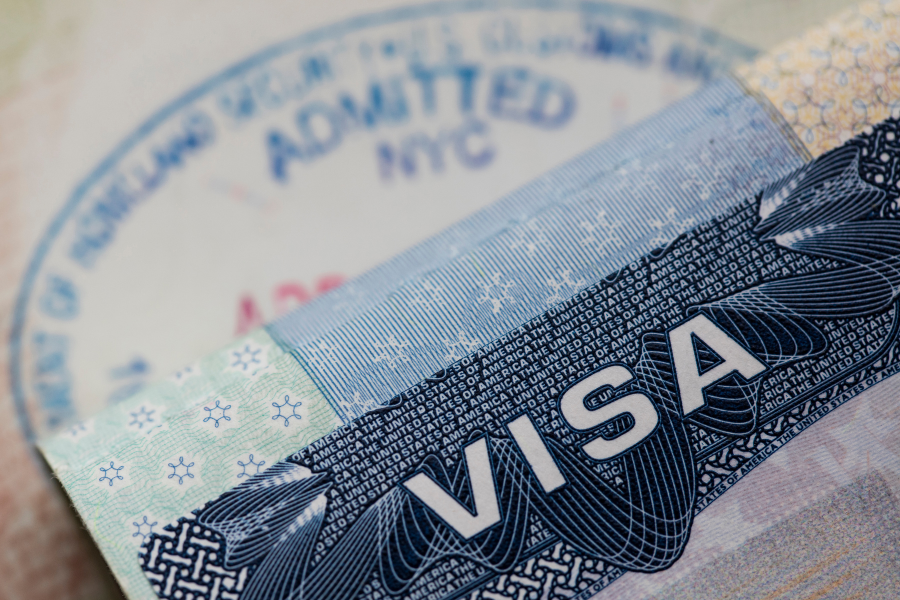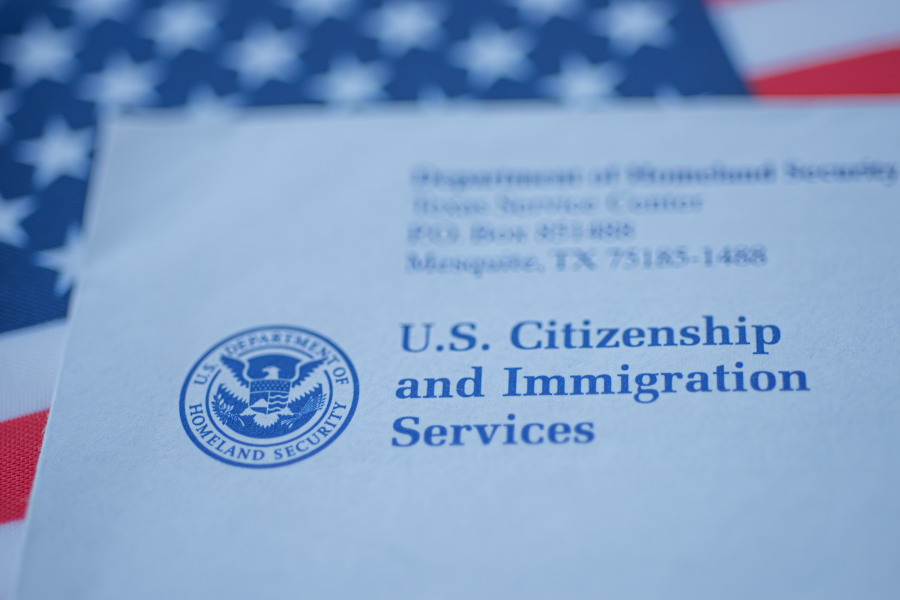Summary:
The question presented: “How can we complete a Form I-9 on someone without identification during the pandemic.” I found no specific document on this point. The short answer is that we can’t.
NOTE: There are specific provisions for minor school children and for the disabled who may not be able to get a List A or List B (identity) document.
Here’s the situation:
A man born in the United States but who has lived abroad for many years comes back and seeks to establish his life here. In other circumstances, he could go to his state and follow their procedures to obtain an identity document (ID) like a driver’s license or an identity card but the pandemic has shut down all in-person services and, at least in Pennsylvania, there is no place to present documents and, so, obtain an ID. Without an ID, the man can’t work in the U.S. because our immigration laws require that an employer fully execute a Form I-9, Employment Eligibility Verification (Form I-9) on employees within three days of hiring. This can’t be completed without ID.
What is a Form I-9 and what are all U.S. employers in the U.S. required to do?
U.S. employers must execute a Form I-9 within three days of hiring someone. The form is composed of three Sections: Section 1 – filled out by the employee; Section 2 – executed by the employer; and Section 3 – used by the employer to reverify someone who was rehired timely.
In Section 1, the employee provides biographic information and states the bases for their work authorization. They may be a U.S. citizen (USC) or national, a permanent resident, or a nonimmigrant authorized to work and, in Section 1, they tell the employer what the basis of that eligibility is and then sign and date the section to bind them to the claim.
In Section 2, the employer documents the results of their document review and signs and dates the section, attesting to their due diligence in completing the form. That attestation asserts that the employer reviewed the identity documents and work authorization documents appear to be genuine and to relate to the person presenting them. (The phrase applied here is “reasonably relates” because employers are not expected to have expert knowledge of document validity or determining identity. We have to act reasonably and, as a practical matter, we tend to err on the side of finding a document valid in order to avoid discrimination claims that can rise from rejecting valid documents because they don’t look right to us.)
Example:
I am a USC from birth. When I begin a new job, my employer must ask me to present identity document and work authorization documents, sufficient for them to execute the Form I-9. I can present any document from List A (combined identity and work authorization document) of the Form I-9 OR a single document from List B (identity documents) and a single document from List C (work authorization documents).
The last time I filled out a Form I-9, I presented my passport since that is a List A document and qualifies as proof of identity and work authorization. More commonly, USCs will present their valid, unexpired, state-issued driver’s license or other ID (establishing identity) and their Social Security Card (establishing work authorization).
What if someone has an expired document?
An expired document does not establish identity or work authorization unless accompanied by an extension of validity. For example, many stated have automatically extended the validity of their IDs during the pandemic and verifying that extension is all that is required for an employer to move forward in executing a Form I-9, using an expired document. However, we can’t use an expired document where a replacement could be obtained and the burden is on the employer to document that extensions are in effect.
What if someone applied for a replacement document and hasn’t received it yet?
If an employee, in meeting their obligation to present identity and work authorization documents, presents a receipt for a replacement document that hasn’t been received yet, they may work for up to ninety days on that receipt. When the replacement document is received, the Form I-9 must be completed using that new document
USCIS’s COVID-19 procedures allow for remote Form I-9 processing but the documentation requirements are unchanged.
United States Citizenship and Immigration Services (USCIS) oversees the Form I-9 process, setting rules for execution and providing guidance, through its I-9 Central. Recognizing that face-to-face document verification during the pandemic raised significant public health and business concerns, USCIS established “temporary policies” which, while providing flexibility in how the documents are presented, maintains the underlying requirement that employers verify identity and work authorization.
An employee can be digitally on-boarded, in strict compliance with USCIS’ temporary policies, without face-to-face meeting. However, once the quarantines are fully lifted, employers will have to go back and do the verification in accordance with the usual policies.
Is there no remedy for the person who can’t get ID due to the pandemic?
The short answer is “no.”
If an exception could be made to the rules, it would be found in either USCIS’ COVID-19 policies, the U.S. Department of Homeland Security (DHS) Form I-9 coronavirus flexibility policies, or in the standard USCIS “Receipt Rule” discussed above and no exceptions are made in those instruments:
- USCIS’ COVID-19 policies provide relief for employers engaged in hiring employees remotely. It assumes that any employer hiring face-to-face will be able to meet the standard document review requirements. Even in a remote hire situation, review of the document is required, albeit via video or other visual inspection. There are various extensions of documents that relate to this matter too but the underlying principle is that there is an identity document and it has expired, not that there is no document to begin with.
- The DHS coronavirus policy is rather more specific to this situation. Therein, the government states: This provision [the March 20, 2020 Worksite Enforcement News Release entitled “DHS announces flexibility in requirements related to Form I-9 compliance] only applies to employers and workplaces that are operating remotely. If there are employees physically present at a work location, no exceptions are being implemented at this time for in-person verification of identity and employment eligibility documentation for Form I-9, Employment Eligibility Verification.
- The USCIS Receipt Rule, like the USCIS Covid-19 policy stated above, is designed to cover situations in which an employee is authorized to work at the time of initial hire or reverification, but he or she is not in possession of a document listed on the Lists of Acceptable Documents accompanying Form I-9 because the document is lost, stolen or damaged. The key here is that there must have been an original ID Card document which was lost, stolen, or damaged and that doesn’t appear to apply to this employee’s situation.
Conclusion:
Without ID, an employee cannot establish their identity and, even with work authorization documents like a birth certificate or a Social Security Card, the Form I-9 can’t be completed. Without a Form I-9, an employer cannot maintain their employment.
In closing:
Form I-9s are an often overlooked Section of our onboarding process. Perhaps it is because, unlike taxes, we collect the documents and information without having to present them but it is easy for non-compliant practices to creep in and the consequences can be significant.
I have had clients who have faced a hundred thousand or more in fines and penalties for non-compliance Form I-9s but the most expensive consequence of poor management of this process is that we can abruptly have to terminate the employment of everyone not authorized. It is not unusual for companies to discover during a government mandated audit that a third or more of their employees and persons in important company roles are not authorized to work in the United States.
This is an issue that is best addressed proactively and on our own terms. A couple of thousand in legal expenses to self-audit and train can save a business.
My compliance and enforcement practice is perfectly positioned to help. We have the experience and capacity to serve client compliance interests well. If your company wants help with such matters, please contact our compliance and regulatory enforcement team at Green and Spiegel U.S.. You can also call or text me directly at 484-645-4194 or email me at dspaulding@gands-us.com.
DISCLAIMER: Please note, nothing I post here is legal advice, nor does reading anything I write or communicating with me on or through social media form an attorney/client relationship between us. Choosing an attorney is a serious matter and should not be based solely or primarily on advertising or any other public communication of an attorney or law firm.




